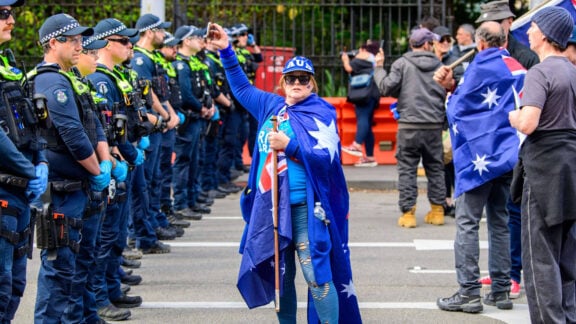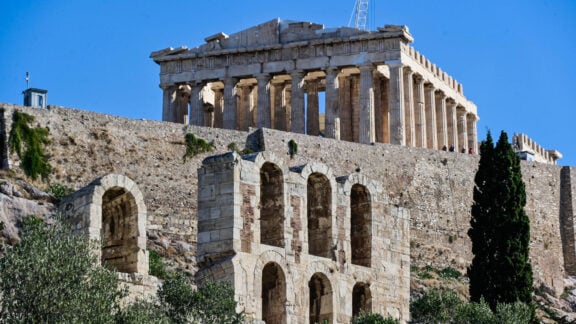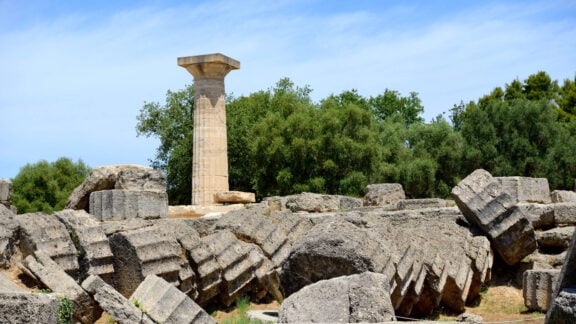On July 16, 2023, Return to Anatolia will host a photographic exhibition for the centenary of the signing of the Treaty of Lausanne at the Preston Library and the photos on display will show the delegations who attended this historic conference and the refugees who ended up in Greece.
The Lausanne Conference was staged in two phases from November 21, 1922-February 4, 1923, and April 23-July 24, 1923. France, Great Britain, Italy, Turkey, and Greece sent delegates to settle the recent Greek-Turkish war, 1919-22 and other questions pertaining to the Near East. Three commissions were created with each commission appointing sub-commissions to discuss issues which eventually would be embodied in the final Treaty of Lausanne. Greece and Turkey were represented by former premier, Eleftherios Venizelos and Ismet Pasha.The first commission discussed the demilitarisation of the borders of Eastern Thrace, Aegean Islands, the exchange of populations, the protection of minorities, graves, and prisoners. The second and third commissions handled the legal status of foreigners in Turkey and economic and financial questions respectively. On January 30, 1923, the Turks rejected the draft terms offered to them with the encouragement of the French. This ended the first phase of the conference.
Sticking points: Patriarchate and Karagatch
There were two important issues for Greece that needed to be addressed. The Turks were adamant that the Patriarchate should be removed and would not yield on this point, since the Greek Patriarch had displayed a hostile attitude towards the Turkish state during the Greco-Turkish war of 1919-1922. Lord Curzon found the Turkish attitude objectionable and would not agree to such a proposal, so he broke off negotiations and left that night on the Orient Express. The Greek attitude over the future of the Patriarchate was very clear, it was that only a new Ecumenical Council could render a decision as to its maintenance or removal from Constantinople. In fact, the decisions of the Lausanne Conference were of a political nature and had no legal effect on the Orthodox church as the Greeks were not involved in such decisions.

G.C. Montagna, President of the sub-committee on the exchange of populations, said it was impossible to reach a solution on the future of the Patriarchate, unless the matter were referred to a plenary commission for a solution. On December 26, 1922, the French, always seeking to be conciliatory towards the Turks, came up with a formula in which the Patriarch would remain in Constantinople as spiritual head of the Church but with the loss of his temporal powers. It was the unanimity of the Orthodox and Allied nations on January 10, 1923, that forced Ismet Pasha to withdraw the Turkish claim to remove the Patriarchate There was no mention of the Patriarchate in the final Peace Treaty and so ended one of the most controversial issues of the entire Lausanne Conference.
During the second phase of the Conference, the issue of Greco-Turkish reparations jeopardised peace negotiations and even raised the sceptre of war between the two former combatants. Venizelos was instructed by the Greek Government to press for a quick solution to the reparation question, otherwise the armistice would be terminated.
To placate the Turks, Venizelos proposed to cede Karagatch and a small triangle of territory between the Maritza and Arda rivers in return for Turkey waiving her demands for reparations against Greece. Venizelos thought this proposal “would give best means of personal satisfaction to Ismet.”
On May 14, 1923, Venizelos met Ismet to explain his nation’s incapacity to pay an indemnity and recognised Greek responsibility for damages done to Turkish property during the recent war. In return, he requested Ismet to ask Angora (Ankara) to waive its demands for reparations from Greece. Ismet told Rumbold that Venizelos’s proposal was unacceptable, but he would consider an alternative plan that provided “something in lieu of cash.” By May 18, the Greek Government approved the Karagatch proposal on the lines suggested by Venizelos. This was as far as the Greek Government was prepared to go on this issue.
Concentration of Greek forces
The concentration of Greek forces in Western Thrace alarmed the Allied Generals at Constantinople to the point of preparing contingency plans to evacuate Allied forces to the Straits in the advent of Greek advance on Eastern Thrace and Constantinople. The Greeks became impatient and even threatened to withdraw from Lausanne unless the reparations issue was settled quickly. Such a decision meant the Greek Government might renounce the armistice and commence hostilities. On May 24, Venizelos and his Foreign Minister, Alexandris told the British delegate Sir Horace Rumbold that they would leave Lausanne in two days if the indemnity issue was not settled. Rumbold told the Greek delegates that if the Turks put up unreasonable demands, then the Allies would seek an adjournment. This put Venizelos in a difficult position, and he telegraphed Athens for further instructions. The Greek Government consented to a postponement of the indemnity question for a few more days so that Ismet could hear from Angora. The Greeks believed that Ankara was withholding its reply to prolong the discussions. A Greek army of 150,000 men with 300 field and mountain guns was ready to advance at 24- hour notice.
Ismet experienced difficulties over the Karagatch proposal. He even threatened to return to Angora (Ankara) if this proposal was not accepted. On May 24, Reouf Bey informed Ismet that the claim for reparations could not be renounced in return for Karagatch. Angora sought compensation “partly in cash, partly by surrender of Greek property in Constantinople and partly in merchant ships.”

Final acceptance
In reply, Ismet urged acceptance of the Karagatch solution as the only viable remedy. Mustapha Kemal supported Ismet’s position so long as the important issues of the Ottoman Public Debt, the early evacuation of Turkey by the Allies and judicial formula were settled in Turkey’s favour. On May 26, in a private meeting attended by Allied delegates, Venizelos and Ismet witnessed the settlement of the reparations issue allowing the Allies to settle their outstanding questions with Turkey.
The Lausanne Treaty was finally signed on July 24, 1923, thus establishing peace between Greece and Turkey and the allies and Turkey. It also included the Convention on the Exchange of Greek and Turkish Populations, exchange of prisoners and interned civilians, and the Protocol to Karagatch and Islands of Imbros and Tenedos.
Stavros T. Stavridis is an independent historical researcher and holds an MA in Greek/Australian history from RMIT University, Melbourne, Australia. He has written extensively on Greek, Armenians and Assyrians and conflict in Asia Minor covering the period 1890-1923.









